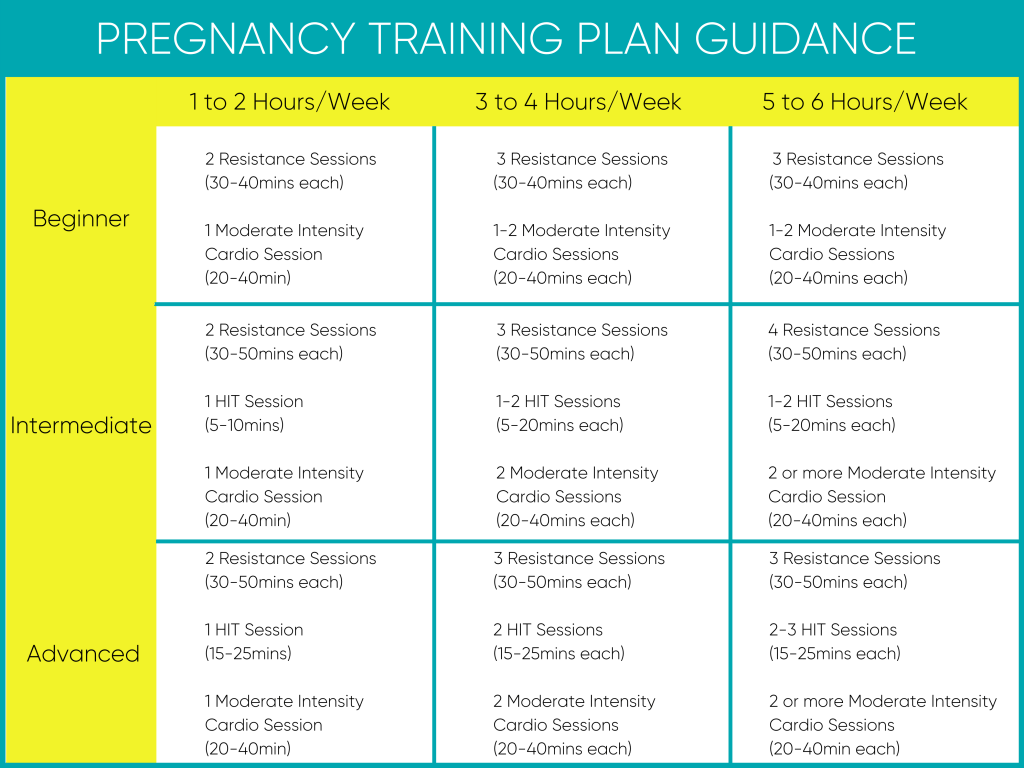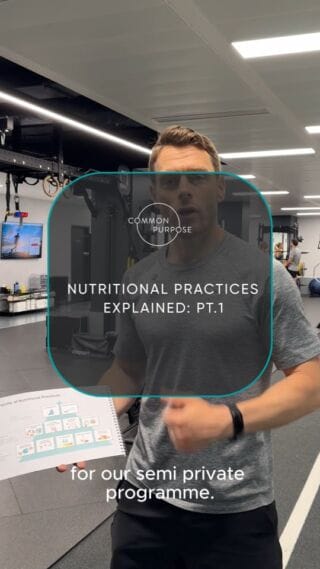Approximately 9 Minutes Reading Time
Brief Article Overview
- Some activities should be avoided during pregnancy, such as contact sports and scuba diving, mainly due to the unnecessary risk associated with them.
- Most other exercises, however, are massively beneficial for a healthy and happy pregnancy (and beyond).
- Your exercise history and ability levels leading up to pregnancy will be a big determining factor in your pregnancy training plan.
- We like to advise that, no matter your training goals, during pregnancy getting physically prepared for birth should take priority.
- The core is probably the most affected area during pregnancy and must be handled with care and attention.
- Strength training and cardio training modifications will depend on training history, but certain extremes are probably not advised (mainly due to the risk-reward analysis).
- We outline an example pregnancy training program for beginner, intermediate and advanced populations.
The Exercise No-No List
Before we talk about exercise, there are a few types of activity that are an absolute no-no when you’re pregnant. These include;
- Contact sports like rugby, American football, hockey etc.
- Activities where there are high chances of falling, such as skiing or horse riding.
- Scuba Diving.
- Activities in high temperatures and altitudes like hot yoga and mountain hikes (especially in tropical climates).
Benefits of Exercise
It should be noted that despite the obvious need to be cautious there is a huge list of benefits to exercising when pregnant that should be encouraged and celebrated. Some of the benefits listed by the American College of Sports Medicine (ASCM) (1) and The American College of Obstetricians and Gynaecologists (2) include;
- Preventing excessive weight gain during pregnancy.
- Reduced risk of gestational diabetes.
- Decreased risk of high blood pressure related to pregnancy.
- Decreased recovery time post-partum.
- Decreased risk of lower back pain and decreased risk of severity of lower back pain.
- Decreased risk of incontinence.
- Prevents/improves symptoms of depression.
- Maintains physical fitness.
- Prevents postpartum weight retention.
- May reduce the risk of caesarean delivery.
Exercise History and Ability Levels
With all these amazing benefits we at Common Purpose hope that exercising when pregnant becomes more important within society. From experience, we find that there seems to be a considerable amount of anxiety and concern ahead of starting a pregnancy exercise training plan. Your ability levels leading up to conception and exercise history will play the largest roles in determining the details of the training plan.
If you’ve trained in the gym for most of your life and you feel competent with both resistance and cardio exercise, you’ll likely have to adapt your routine steadily over the duration of pregnancy. These adaptations tend to be driven by common sense (as your bump grows for example), and certain biological factors that may affect your energy and performance levels.
However, if you are relatively new to exercise you may need to take a slightly slower and cautious approach to get into an exercise regime. We define a beginner as someone who has never trained before or only trained up to 6 months before conception.
Goal Setting and Its Struggles
We made this point in part 1 and it’s important to bring this back now since it’s important to know when planning your exercise program based on setting your goal. We’ve worked with a large number of pregnant clients over the years and each individual has their own sets of beliefs and goals.
Some clients want to bounce back as quickly as possible after birth, whilst others want to maintain body composition for as long as possible. No matter what the client’s goal; we always take them seriously. However, we do ask our clients to truly evaluate their goals and use our experience to offer alternative perspectives. For example, we may encourage clients to;
“Focus your goal on getting physically prepared for the birth itself; like you would prepare yourself for a marathon or a sports event.”
We suggest this for two reasons. Firstly, the physical demand for giving birth is extremely high and we want our clients to be in the best shape possible to handle this. Secondly, the birth of a child is one of (if not, the) most important experiences in a mother’s life and we really take this seriously! When you think of things this way, it becomes so important that the event of giving birth deserves to be at the forefront of your training priorities.
Once we have established our clients’ focus on preparing for birth, we can then start to create a training plan by conducting a “needs analysis” (determining which physical attributes are required to succeed at a given event). You’ll find that giving birth requires a blend of endurance, stamina, strength, resilience and an ability to recover well. Based on this, we can determine the training modalities that are required.
We often find that there is a huge crossover with the types of exercises we prescribe for fat-loss, endurance and strength training. By looking at your pre and postnatal exercise plan in this manner, it can unlock higher levels of motivation and energy, as different micro-goals, such as body composition or performance goals, can become embedded within the macro-goal of “training for birth”.
Core Training
This is an important subject to discuss and its one that we find has the most conflicting amount of information out there. Firstly, it’s important to understand what the core muscles do. Simply put, core muscles connect the pelvis, spine and ribcage and both create movement and provide stability, constantly translating and resisting forces from 360°. The basic movements are (anti)flexion, (anti)extension, (anti)rotation and (anti)lateral bending.
As the pregnancy develops, you’ll find that a growing mid-section will stretch and alter the core muscles which will result in these movements becoming fairly limited. As a result, you’ll find that using the core muscles to facilitate movement is going to become more and more difficult, yet maintaining core strength will remain very important. We suggest that you switch to training your core muscles to stabilise, rather than execute movements, whilst keeping in mind that our core muscles work in almost every movement we perform. See below some of our favourite pregnancy-friendly core exercises.
 Tiago
Tiago







